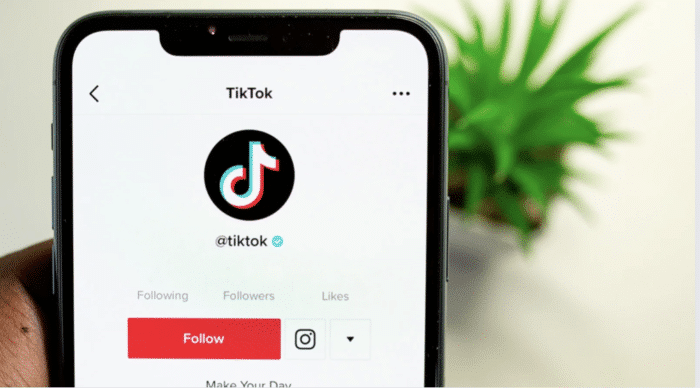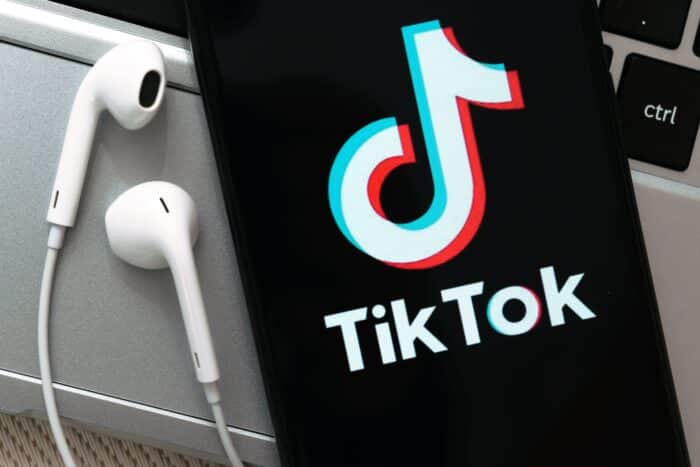
With its catchy short-form premise, TikTok has become the social media platform where it’s all about going viral. It’s little wonder that brands and content creators are falling over themselves in the pursuit of the mythical “viral” status. A word of warning, though, no one truly goes viral on TikTok overnight. In order to harness all the platform has to offer and the undeniable benefits of having your content go viral, you have to understand the app’s culture – and most importantly, its algorithm!
Why do TikTok videos go viral?
“Going viral” is when content is shared massively, quickly, and unpredictably on one or more social networks. It’s exactly what happens on TikTok – short videos that are popular are shared millions of times in a short period of time. This sometimes surprising success relies on three things:
An innovative format that uses music as a springboard to popularity
Going viral on TikTok is first and foremost about embracing the app’s original and innovative format: ultra-short videos mixed with music. Indeed, in engagement and exposure terms, the video format has long been superior to photos and other static content.
On TikTok, music plays a fundamental role in content being shared massively. Users instigate dance trends by filming themselves performing a choreography to a piece of music, and other TikTokers copy the moves in their own videos.
A simple-to-use platform
TikTok’s popularity also owes a lot to how simple it is to use. The app is easy to navigate, and you can very quickly create original videos with a plethora of creative effects and filters – all with no technical knowledge required! This allows users of all ages and backgrounds to go viral simply by concentrating on making colourful and effective content.
TikTok’s other great advantage is that it lets you watch an unlimited number of videos without ever creating an account. This openness has doubtless contributed to the app’s popularity and, as paradoxical as it may seem, actually ends up making you more likely to create an account.
A young audience that’s in tune with what “going viral” involves
Although the app is used by people in all age categories, teenagers and young adults still make up the lion’s share of TikTok users. It’s a young audience that has grown up on short-form content and is perhaps more in tune than older generations with the culture of “going viral”: making use of catchy music and participating in a popular trend to stay on-trend and show that you belong to a certain group. In 2022, TikTok plays an integral role in the social lives of Gen Z.
Video replies
An innovate feature that definitely plays a key role in content going viral on TikTok is the ability to reply to a video with another video. This option can generate a succession of reaction videos, thereby creating a viral trend around a single popular video.
Content that stirs emotion
Sometimes, videos go viral completely unexpectedly, but it all ultimately comes down to the content. Popular TikTok videos (and short-form content in general) are loaded with a high emotional charge. They play around with music and creative effects to convey a whole host of emotions: laughter, joy, sadness, surprise… Shared emotions create social bonds, and this is what encourages users to interact with content and share it – a user who connects with the emotional charge of a video is instrumental in it going viral. This is especially true for humorous videos, which are often the most popular on the platform.
An algorithm that rewards viral content
On TikTok, there’s no need to have a huge following to go viral. Instead, TikTok’s algorithm puts content quality before the size of the account that posts it. But quality can be difficult to measure. TikTok looks at how long people stay on the video and how many times a single user watches the same video. These statistics enable TikTok to determine if a video is popular or not. If it is, TikTok’s algorithm boosts the video’s exposure, regardless of how popular the account is. There really are no hurdles along the road to going viral!
How can my content go viral on TikTok?
As we’ve seen, TikTok is the ideal playing field for a viral marketing strategy. With its 15 million active monthly users in France, the opportunities are almost endless. While we can’t always predict what will and won’t go viral, we can try to apply these best practices to stand the best chance:
Monitor up-and-coming trends
TikTok is the social network all about trends. Anything from a catchy song to a challenge, or a popular catchphrase can spread like wildfire on TikTok. It’s difficult to overstate how important it is to keep up-to-date with new trends on the platform. Why not try seeing what hashtags are popular in your area of business or what the industry’s influencers are up to?
Don’t forget that TikTok is also all about the music. A simple but highly effective way to surf the wave of a current trend is to use the same music on your video.
Create short videos
As of 2022, the maximum video length on TikTok is 90 second, but the appetite is particularly high for ultra-short videos of 15 seconds or under. Catching and holding a user’s attention is what success on TikTok looks like – and to achieve this, the shorter the content, the better. Keep in mind that TikTok’s “completion rate” (how long users stay on the video compared to how long the video lasts) is a key part of the app’s algorithm.
Of course, you shouldn’t completely write off longer-form videos. They are extremely powerful in developing a subject further once you’ve already built your community – it’s just that they’re much less likely to go viral!
Work on the hook to grab attention
Still with attention grabbing in mind, your video has to have an effective hook. Your hook draws people in in the first place, so the cover image should make people want to watch the video, perhaps by using a tempting text that piques people’s curiosity. Of course, the content that follows should then be relevant and of a high quality to avoid disappointment.
Challenges: the perfect viral format
Challenges are an excellent way of harnessing what going viral has to offer. Anyone can set a challenge on TikTok, and popular ones are picked up and spread around at the speed of light! A challenge can be anything from a choreography to a skill to show off. The funnier or more unusual your challenge, the more likely it will be to go viral.
The best way to get ideas for an appropriate challenge to set is to keep an eye on what’s trending and choose a challenge that fits with an up-and-coming trend. Simplicity is key here, so that users can easily and quickly replicate your video, though it’s also important that your challenge be bold. The choice of music is also essential in TikTok challenges that go viral, with funny songs or music that tells a story being the most popular.
Aim for humour, emotion, and authenticity
TikTok is a more laid-back and authentic social media platform, in comparison to the more professional and “official” image other platforms have, and users really enjoy this personality. The key to going viral on TikTok is to create content that is genuine, doesn’t take itself too seriously, and that speaks to users on their level. Videos that are too serious or aesthetically perfect don’t fit with the TikTok personality. On the contrary, popular and viral content on TikTok is characterised by how natural it is in reflecting real emotion, helping users identify with it.







